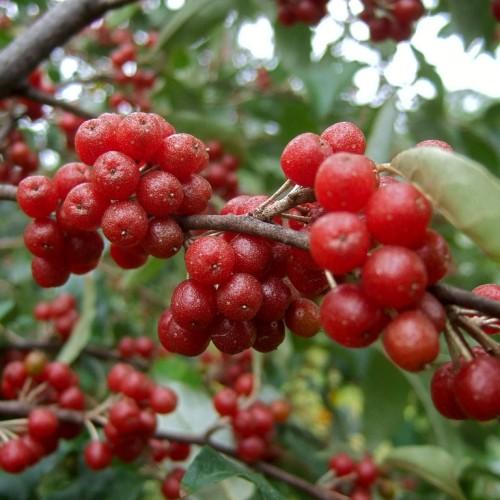
autumn olive
Elaeagnus umbellata
Cycle:
Perennial
Watering:
Average
Hardiness Zone:
4 - 9
Flowers:
Flowers
Sun:
Full sun,part shade
Fruits:
Fruits Ready In Fall
Edible:
Yes
Leaf:
Yes
Growth Rate:
High
Maintenance:
Moderate
Poisonous To Pets:
Yes
Drought Tolerant:
Yes
Salt Tolerant:
Yes
Thorny:
Yes
Invasive:
Yes
Care Level:
Medium
watering
When watering autumn olive plants, it is important to water frequently but only light amounts. They need to be kept consistently moist, but not saturated, so water them thoroughly until the soil is damp but not muddy. Do this about once every week or 2, depending on the weather conditions and how much water your soil holds. If the soil is dry an inch below the surface, give it a deep soaking. Soil should always be slightly damp to keep the roots healthy and to ensure enough oxygen and nutrients can get to the roots. Too much water can cause the roots to rot, so it's important to not let the soil become soggy for long periods or for the roots to stay in standing water.
sunlight
Autumn olive plants need a minimum of 8 hours of sunlight each day, preferably 12 hours, to thrive. This can be direct sunlight for some of the day and indirect sunlight for the rest, as long as it's not shaded by other plants for too long. During the hottest parts of the day, such as midsummer, shade may provide a useful respite for the plant from the intense heat. During the spring and summer, it's important to expose autumn olive plants to full sunlight, since this helps them develop strong stems and larger leaves. In the winter months, autumn olive plants may suffer from too much direct sunlight, so it's best to provide them with some shade during the afternoon hours.
pruning
When pruning autumn olive, the best time is in late spring (May or June). Since autumn olives have a high growth rate and can become very tall and wide, pruning should be done regularly to keep them in bounds. Pruning should be done to remove any dead, diseased, or broken branches, and to reduce overall size of the plant. As a general guideline, remove no more than 1/3 of the plant in 1 season, and keep pruning cuts at a 45-degree angle, just above an outward facing bud. Pruning at the wrong time or cutting too much can cause damage that can stress the plant, so take care not to overdo it.
